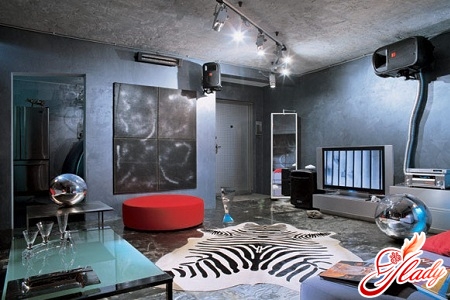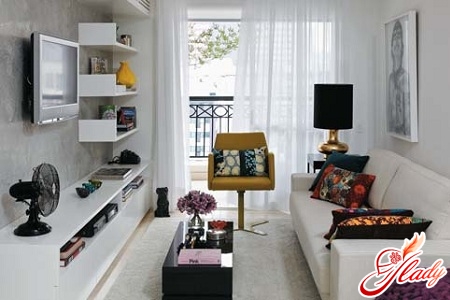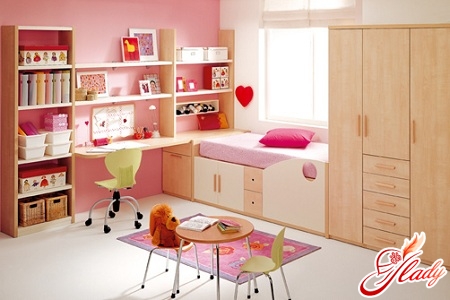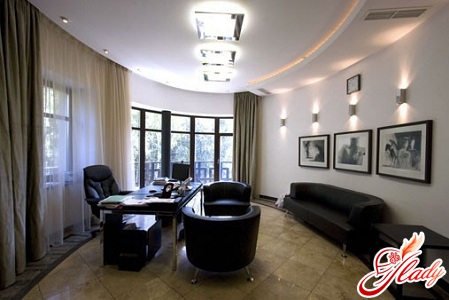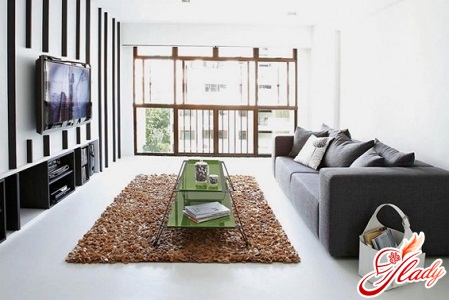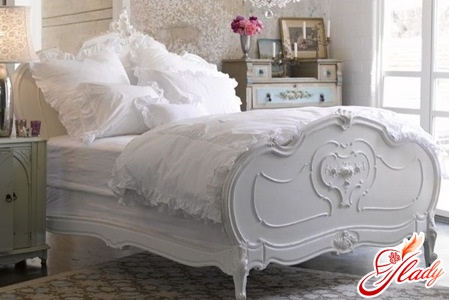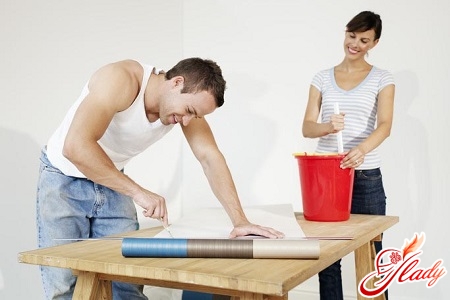
Dear readers, how often do you dorepair in your house? Maybe this is your profession? And who agrees that repair is a pleasant matter, but troublesome? Anyway, starting up cosmetic repairs in the apartment, first of all we want to enjoy the work done and we also want the result to be happy for us more than one year. However, not everything is perfect: the ceilings are uneven, then the construction flaws appear through the pasted wallpaper; and the corners suddenly took offense at you and cheated their "cheeks". Remember, as before, we had to glue the paper wallpaper? Oh, it needed "skill, hardening, training"! The paper quickly got wet, tore in the most unexpected place, glued together. Did you ever happen to have a wallpaper on the floor in the morning? Since then, not so many years have passed, and the wallpaper industry has not only stepped forward, but made a huge leap in its development. "Clothes" for the walls is presented in an incredible amount for any color, taste, size, quality. Today you will be offered wallpaper paper, acrylic, for silkscreen printing, non-woven, velor and washable.
Fluffy wallpaper
Due to its qualities, the greatest popularityhave purchased exactly the non-woven wallpaper. Most often this type of wallpaper is designed for painting. And they can be painted with water-emulsion, latex and acrylic. In any color. And withstand such wallpaper up to ten colors. Using stencils, you can draw pictures of any complexity. Before you learn how to glue non-woven wallpaper, you, we believe, will be interested to know what the advantages of this kind of wallpaper in front of similar paper products. In any construction market, it will be answered that, first, the fleece is much stronger than plain paper, although non-woven fleece wallpaper based on cellulose and textiles is made. In addition, the manufacturing technology makes this type of wallpaper resistant to deformation, they do not stretch and do not shrink when dried. Flizeline wallpaper can be glued to any surface: on concrete, wood, drywall, chipboard. And one of the important advantages of non-woven wallpaper is the ease of gluing that is accessible to everyone. We just need to know some rules, which we will discuss below. 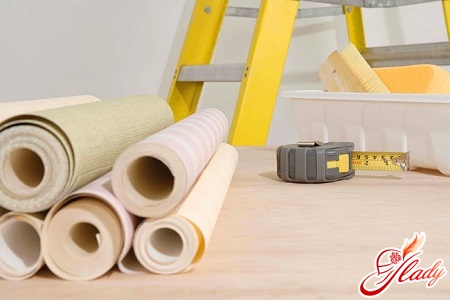
Preparing wallpapers
When buying a wallpaper, pay attention to the numberbatch of each roll. It must necessarily coincide, otherwise there may be some difference in color or shade. And the necessary amount of material you can count directly in the store. Professionals are usually advised to always take wallpaper with a small margin, especially if the chosen wallpaper pattern needs to be customized. After removing the packaging, inspect the wallpaper: there should be no abrasions or creases on them. Next, you should cut the stripes along the height of the walls with a mandatory allowance for a fit of five to ten centimeters on each side. Examine the label - it usually indicates recommendations for joining the canvas, according to which you must cut the workpieces. Types of connections
- Reverse docking means that each subsequent web should be reversed by 180 ° relative to the previous one. That is, you must change the top and bottom of the wallpaper in turn.
- When directly docked, the wallpaper is glued in one direction along one of the selected lines.
- Free docking is the most economicalthe type of joint, as it allows you to glue the canvas one after another, not observing the given pattern. Just remember that glue flizelinovye wallpaper should be butt to prevent seams visible.
- Docking with offset is a laborious kind of docking, which involves drawing a picture. Therefore, for each canvas you need to make a stock of at least ten centimeters from below and from above.
Wall Preparation
Though non-woven wallpaper is quite dense andoften they are glued to the untreated surface, we advise you to pre-prepare the walls. This stage will allow you to get a more stable result, and through some thin copies of the wallpaper there will not be any mounds or spots that are usually located, as luck would have it, in the most prominent place. Thoroughly remove the old coating with all the scraps. If this is the problem, simply wet with hard bristled water with hard-to-remove areas, leave for a few minutes to get wet and use a spatula to easily scrape off the remaining pieces of wallpaper. Simultaneously with removing the wallpaper, unscrew all the existing screws for the pictures, sticking out the dowels, remove the sockets, before disconnecting them, unscrew the curtains and so on - remove everything that can prevent you from sticking the wallpaper ... Next, you need to level the surface of the walls: cover up large holes and cracks cemented mortar, small irregularities treated with putty. Now attach the wallpaper to the wall and see if the building spots are visible through your wallpaper. With a positive response, you will have to treat the entire surface with a diluted putty or special paint to give it a uniform color. And only then you can cover the walls with a primer. 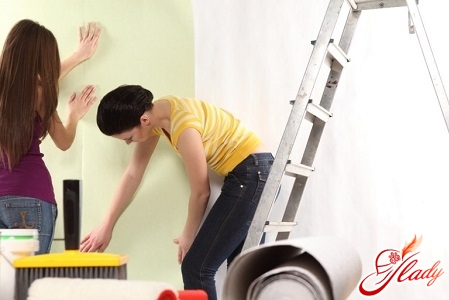
Glue the wallpaper
Answering the question how correctly to gluenon-woven wallpaper, we note the main and, perhaps, the only difference of this process. It consists in the fact that the glue is applied only to the walls, the wallpaper itself does not need to be lubricated with any solution. This simplifies the whole process so much that you immediately become a fan of this kind of wallpaper! And of course, you need to use only glue, designed directly for non-woven wallpaper. Prepare the solution according to the enclosed instructions. A common misconception is to dilute the glue in warm water, which provokes the appearance of numerous lumps. Use only cold water and you will get rid of unnecessary problems. When sticking flizeline wallpaper butt-end, it does not matter which side you start this process, but it's more reasonable to start from the corner of the room. Using a plumb or building level, draw a strictly vertical line and work the surface with glue a little wider than the cut fabric. Glue must be applied carefully using a roller with a pile, a brush for hard-to-reach places or a brush. Be careful, the glue should not be too much or very little, in case of improper docking the canvas should be easily detached from the wall. So, the first cloth is glued strictly on a vertical line. The upper edge slightly captures the ceiling. Then slide the rubber roller along the wallpaper along the center, and then "herringbone" slide the roller across the entire canvas, removing air bubbles and pressing the wallpaper tightly against the wall. Surplus cloths from above and from below are cut off by a stationery knife, using thus a metal spatula instead of an emphasis and a ruler. Particularly tightly with the roller, press the place of joining the wallpaper. Sealing adhesive between joints must be removed immediately with a clean damp cloth. If the glue is not removed in time, the subsequent painting will make these places less saturated. Important! Pasting of walls with wall-paper should be made in the closed premise, and in no event it is impossible to open windows or specially to heat up a premise before full natural drying of walls. Sealing wallpaper of seats and switches
- Disconnect the sockets and switches.
- Remove the outside parts of the sockets and switches.
- Glue the canvas on the wall as a whole, covering the holes intended for the sockets.
- After drying, cut out the wallpaper around the perimeter of the hole with a stationery knife.
- Replace the outer parts of the switches.
- Sealing of internal corners with wallpaper
At first glance the beautiful gluing of the corner of the roomseems like a jeweler's job. However, following the further recommendations from our story about how to glue wallpaper on a non-woven base, you can easily learn the professional way of pasting corners. Relying on the fact that mostly non-woven wallpaper has a width of one hundred and six centimeters, we make two vertical markings on different sides of the corner at a width of one meter. First, glue the wallpaper on one side along the marking line, following the technology described above, and firmly press the canvas at the corner formation point. At you the transition of wall-papers on other wall is formed. Then, do not hesitate, do the same operation on the wall from the other side of the corner. Thus, you have an overlap of wallpaper in the corner. Then, with a stationery knife, draw a line of cut along the corner (or slightly shifting to any wall). Be careful, use a metal spatula for convenience. It remains to carefully remove the cut off excess wallpaper, if necessary, once again handle the corner with glue and press the wallpaper tightly. That's how you get the perfect joint in the corner. So, now you know how to glue non-woven wallpaper. Summarizing all of the above, we note the main differences in the process of wallpapering on wallpaper non-woven: the application of glue only to the surface of the wall and the labeling of the webs in relation to each other only buttock. We wish your repair to end safely and bring only positive emotions!




